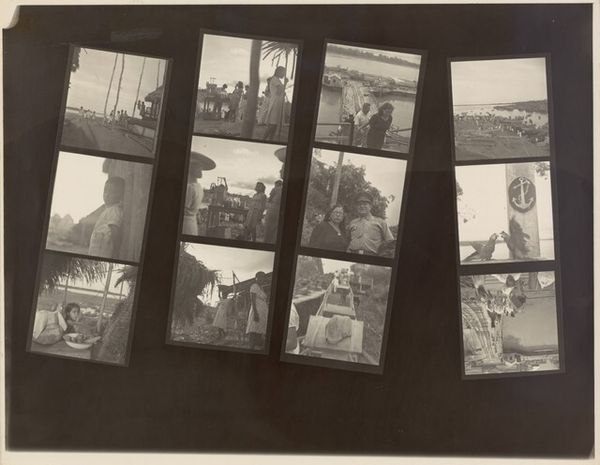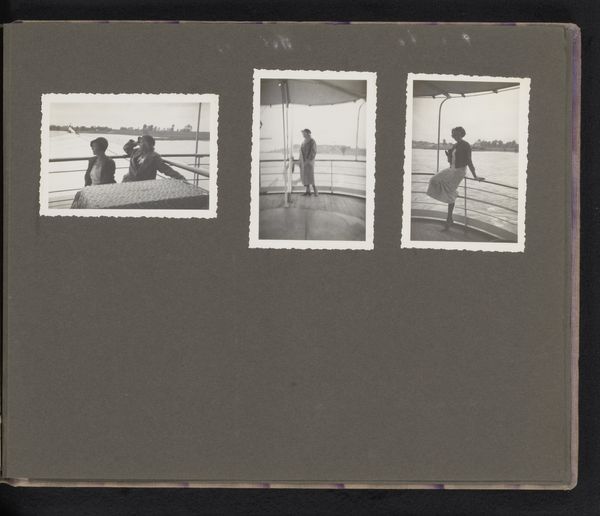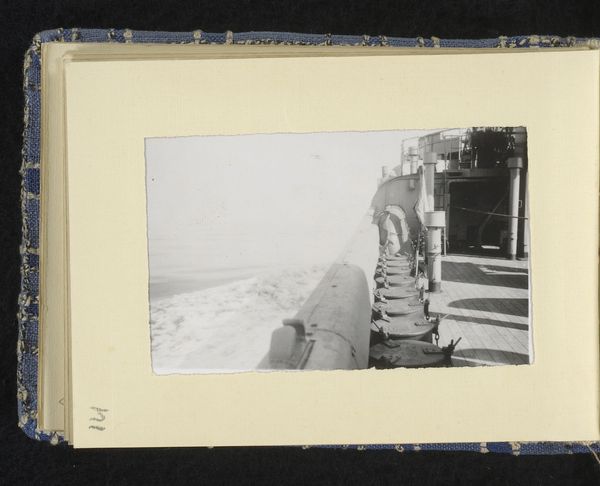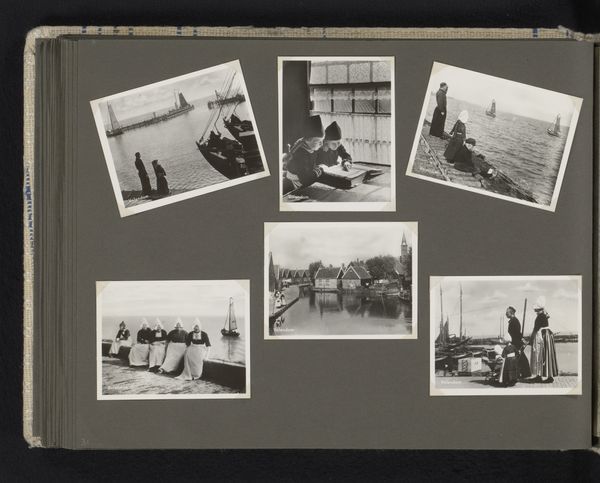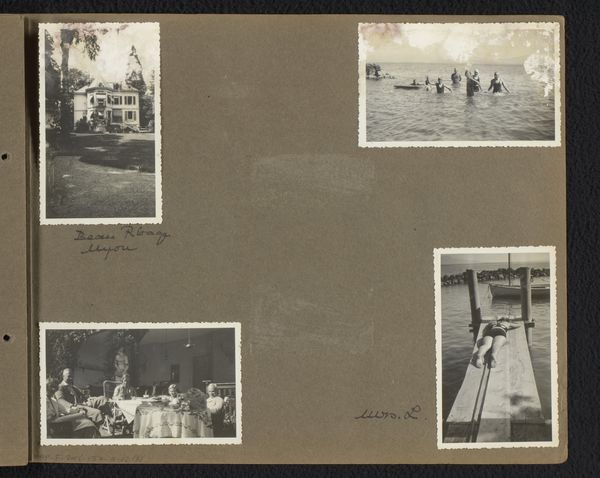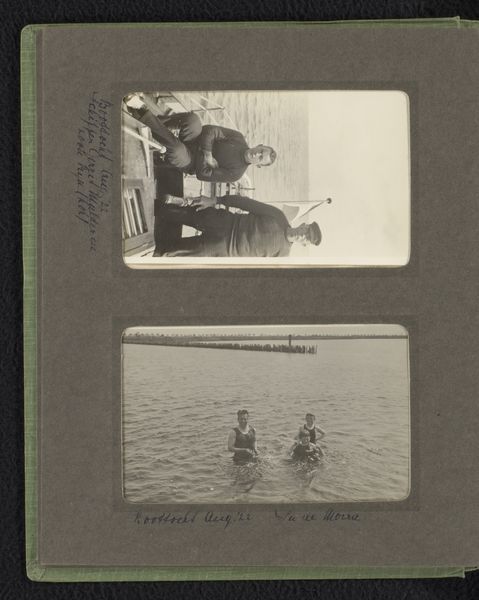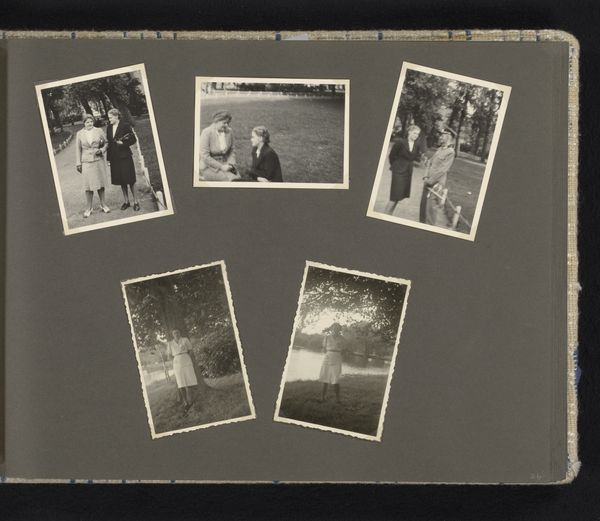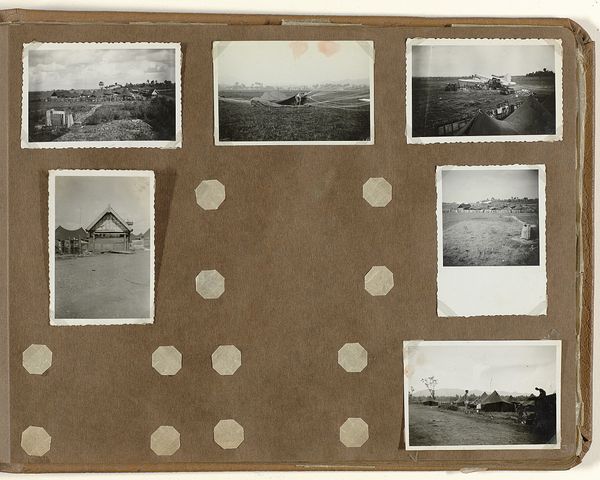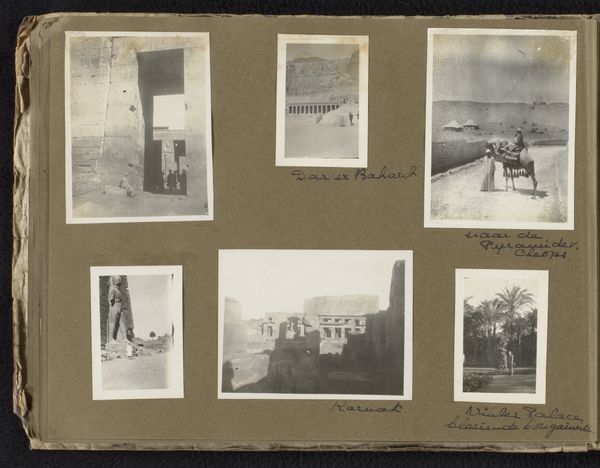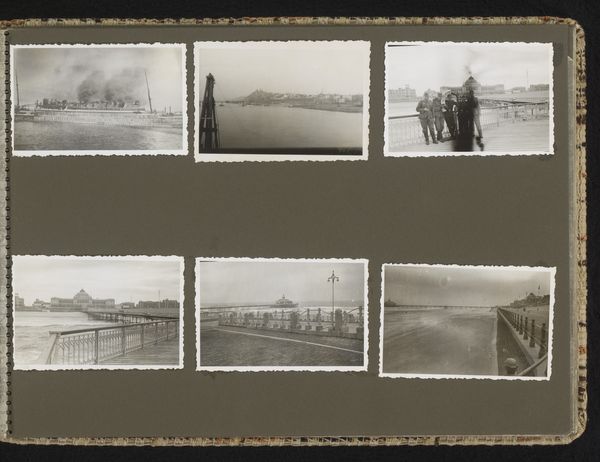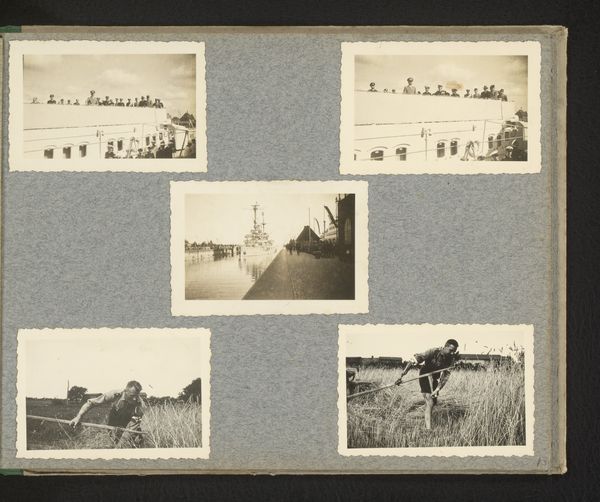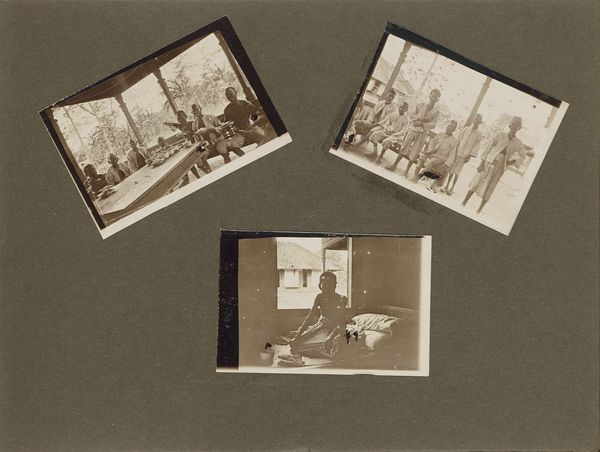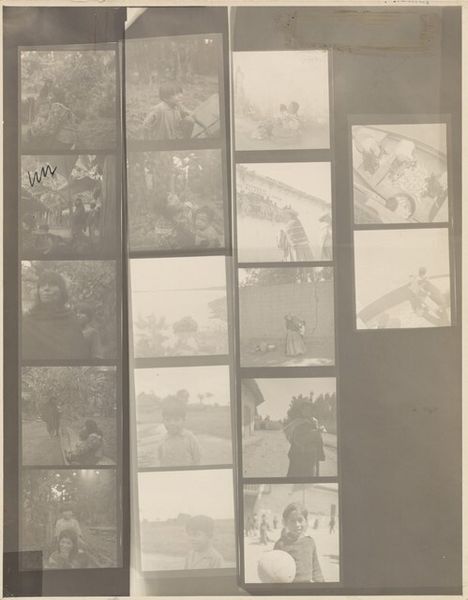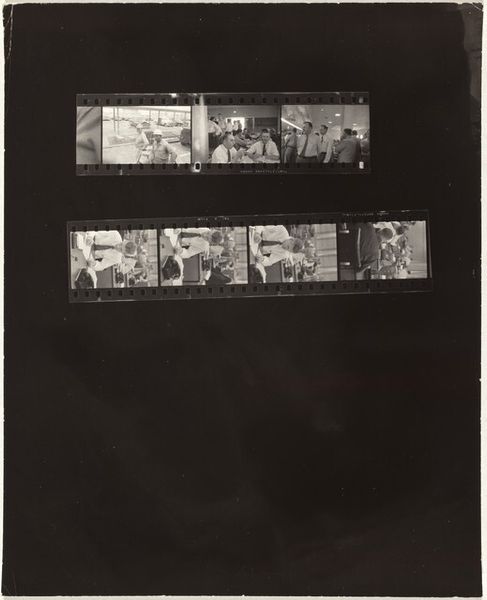
Mississippi River--St. Louis no number/Black White and Things 15 1947
0:00
0:00
photography, gelatin-silver-print
#
portrait
#
landscape
#
street-photography
#
photography
#
gelatin-silver-print
#
19th century
#
cityscape
#
modernism
#
realism
Dimensions: sheet: 24.6 x 15.1 cm (9 11/16 x 5 15/16 in.)
Copyright: National Gallery of Art: CC0 1.0
Editor: Before us hangs Robert Frank’s 1947 gelatin silver print, titled *Mississippi River—St. Louis no number/Black White and Things 15*. Immediately striking is its layered composition, presenting what appear to be several distinct images within one frame. The gray tones create a nostalgic atmosphere. Curator: Indeed. This is Frank at a formative stage, grappling with modernism through the lens of social realism. Notice how the frame itself acts as a grid, dissecting scenes along the Mississippi. What’s key here is understanding the formal relations: the geometry created by the river’s edge, the placement of the figures, and the interplay between light and shadow. The repetitive verticality of the wooden pilings creates a rhythm across all panels. Editor: For me, that repetition points towards the industrial materials crucial to river infrastructure—timber pilings and metal structures, all playing their part in St. Louis’s economy and everyday existence. I'm curious about his choices around gelatin silver. Curator: Ah, that speaks to the tonal range achievable through photographic chemistry; the gradation is striking. But also note the considered arrangement and sequencing. These elements generate a dialectic between industry, nature, and the presence, mainly the marginalized, of those living alongside the Mississippi River. Consider its philosophical dimensions. Editor: The materiality makes me wonder about his process and labor: each image carefully composed, printed, and arranged on the page. The figures almost seem to wait or pause. Is that tension about anticipation? How that reflects everyday realities seems pertinent too: the way material needs must meet expectations to make ends meet and make a living. Curator: You are close to what I feel. I do wonder about the intent behind a black-and-white representation for scenes rooted in color—it’s far more than archival impulse at work. It gives clarity to each geometric panel and their relationship in this particular landscape composition, in terms of their combined effect within this layout. The lack of explicit subject also provokes questioning and critical thinking. Editor: It’s compelling to see how this early work allowed him to experiment with capturing America on the verge of post-war shifts in industry and community that shaped a new vision of a future he continued to express over the next decades of art practice. Curator: Yes, a view towards capturing light within the geometry of industry and a focus on those it affects. These observations add complexity, giving insight and form into how photographic art reveals itself at first, then demands close viewing to deepen meaning.
Comments
No comments
Be the first to comment and join the conversation on the ultimate creative platform.
